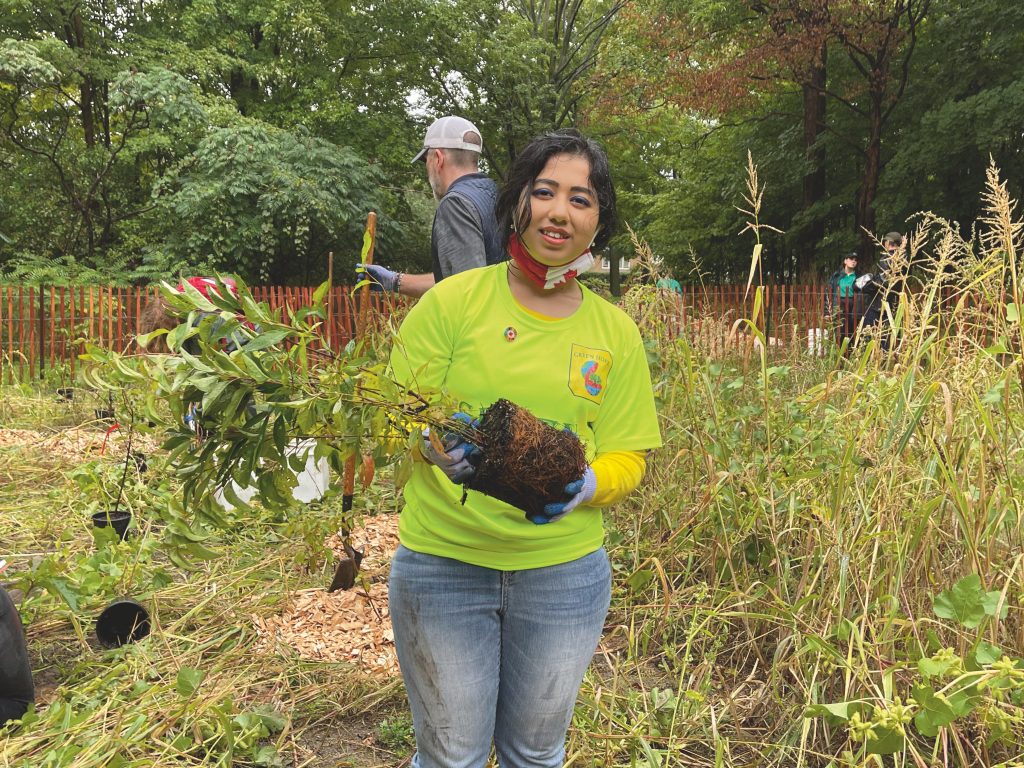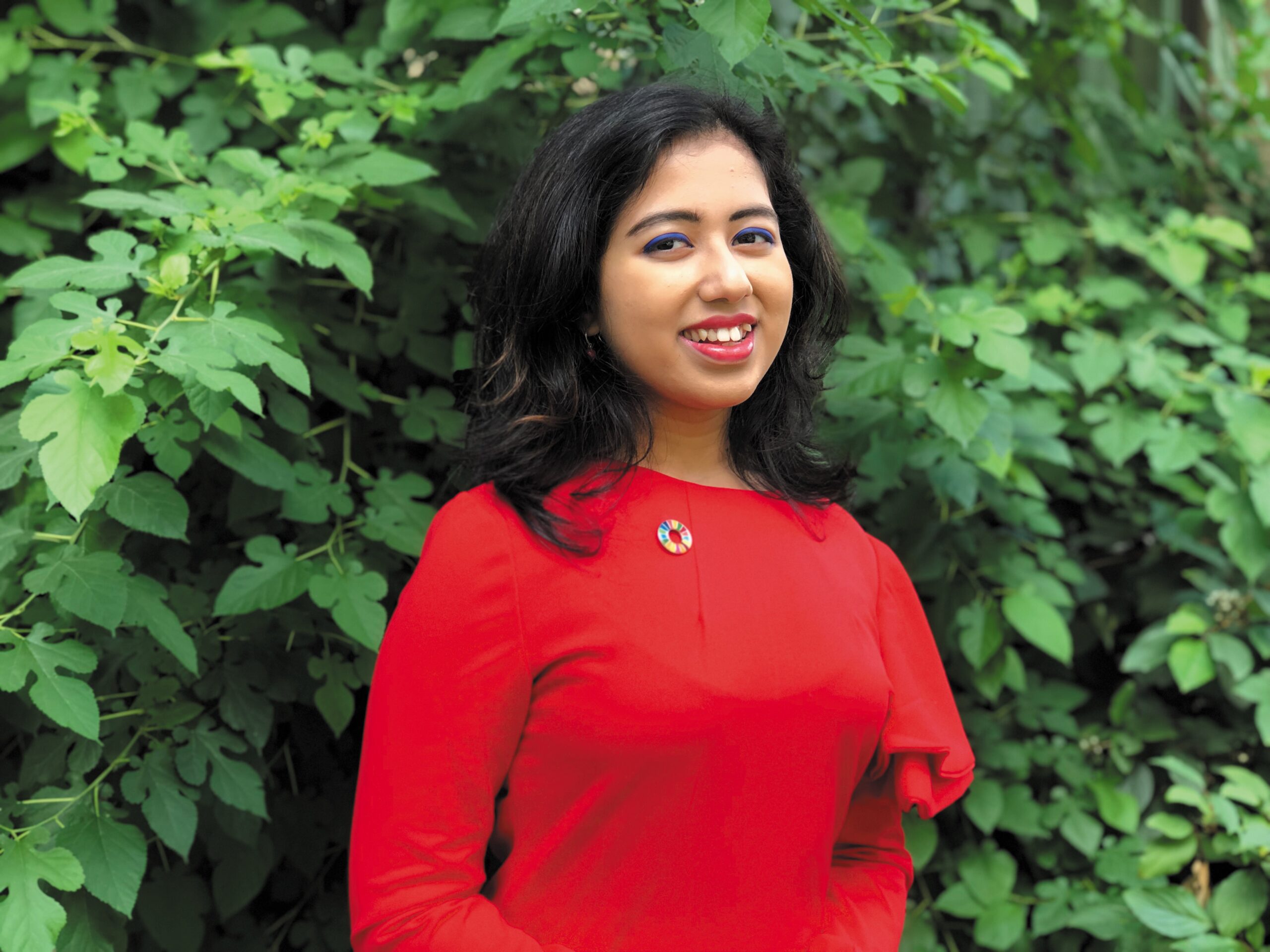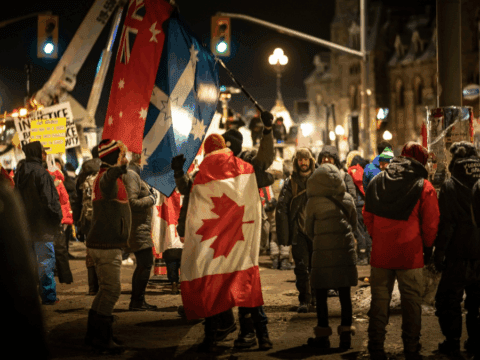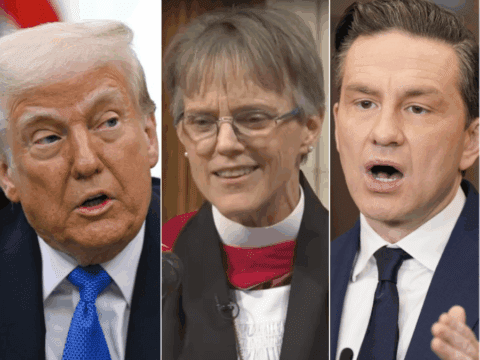A champion of environmental change, Kehkashan Basu has been tirelessly advocating for sustainable development since age eight. Now 21, she is the youngest-ever global co-ordinator for the United Nations Major Group for Children and Youth, council leader for the Toronto-St. Paul’s federal riding, and founder and president of the Green Hope Foundation, which helps young people in over 25 countries engage in sustainable development and mitigate climate change. Basu was recently elected to the board of trustees of the Parliament of the World’s Religions and is the youngest trustee in the organization’s history.
She spoke to Julie McGonegal from her home in Toronto.
You may unsubscribe from any of our newsletters at any time.
Julie McGonegal: What inspired you to speak up and act on environmental issues at such a young age?
Kehkashan Basu: I grew up in a family where empathy was normalized. I saw it in my parents and grandparents. I saw it in how, every weekend, my parents would distribute food and clothes to the less fortunate; my grandmother would grow vegetables and fruits on her organic terraced garden. I thought that taking care of the planet and our fellow human beings was the norm for every single person, and that I had to think about other people because there was no other way to live.
My conviction was vindicated when I attended a lecture by environmentalist Robert Swan, where he said that the greatest threat to our planet is the belief that someone else will save it. I planted my first tree on my eighth birthday, which falls on World Environment Day. I started working on the ground out of that deep sense of mission, and then, when I was 11, the United Nations caught hold of the work I was doing. I was invited to speak at my first UN Conference.
I started to envision how I could help bridge the significant gap between top-down and bottom-up processes. The next year, when I was 12, I was at Rio+20. There were something like 50,000 delegates, but only five people under the age of 18. I realized that, in order to engage children and young people in sustainability, I had to provide a different engagement platform.
That was how Green Hope Foundation came about. Our first goal was to engage children in the sustainable development process, through learning that turns into ground-level action, and then slowly and steadily progress to communities that are most often left behind — children and young people, women and other groups most affected by the climate crisis.
JM: Do you feel your voice, as a youth representative, is heard at international gatherings? Who gets heard and who gets excluded from climate conversations?
KB: There is a gap there. It’s popular to choose one youth to speak. One of the biggest challenges is that youth are treated as a homogenous entity with just one problem. And there are stereotypes of youth that function to criticize and blame. In that sense, I’d say that the ground-level voices of young people are still not heard. Those most affected by climate change are youth, and youth are working on the ground to bring about change.
JM: What advice would you give to children and youth wanting to engage in environmental action?
KB: You don’t need to wait until you’re 18 and can vote or graduate from high school in order to bring about change. I would say to start local and start small.
Much of the time small actions are discounted in favour of bigger political efforts, like engaging the private sector and government and asking them to change. But I think small actions can enable you to become a responsible, empathetic human being, so that when you become a decision-maker, you make the right decisions.
JM: How do you educate yourself as a young person without becoming engulfed in climate grief? How do we educate children without traumatizing them?
KB: I have a lot of optimism and hope, and I believe in concrete solutions. The best way to alleviate our grief is through promoting positive action. In my work, I see the horrifying conditions of people in some communities — post-climate disaster, post-war — but it is possible to bring about change and create a better world. When we talk to children about climate change, it’s all about actions that can be taken and positive things that can be done.

JM: What are some of the initiatives that Green Hope is doing with children in Canada?
KB: We are official partners of the Toronto District School Board and work with school boards across Ontario and the country to ensure that environmental education is provided to children. We have our own farm here, just outside of Toronto, and a successful “grow your own food” campaign.
As the council lead of the Toronto St. Paul’s Constituency Youth Council, I ensure that our messages are conveyed to policy-makers. Children also learn about how our Ontario species are endangered, why they’re endangered and what they can do.
JM: Why is gender and social inequality so important to your environmental advocacy?
KB: You can’t address climate change without looking at how it affects women and girls, who are severely impacted. Climate change is an inequality amplifier. It amplifies gender and other socio-economic inequality. Climate change and COVID together create a dual amplifier for gender inequality.
JM: How has Green Hope tried to address that?
KB: One of our most recent projects is in rural Bangladesh, an area that’s affected by climate change in the form of both severe droughts and severe floods. Climate-related disasters often force girls to drop out of school, as women have the added burden of managing their families and villages while men migrate to find work in the cities. They don’t have the skills, resources or infrastructure to do that — they do not have electricity, clean water and sanitation, and there’s an elevated risk of exploitation trafficking, especially at night when they go to relieve themselves in the fields.
We’ve installed solar streetlights so that they can safely venture out at night. We’ve also installed a solar grid on the homes and the schools, and we’ve provided clean water and toilets next to the schools so that the girls feel safe. Now, when a climate disaster strikes, they can feel safer going to school.
More on Broadview:
- Wetlands vs. developers: a small-town battle with national ramifications
- She felt disconnected from Christ. Outdoor church brought her back.
- The fix for more sustainable and livable cities starts with your garden
JM: How is your activism rooted in your spirituality?
KB: I’m a practising Hindu, and the teachings of my faith very much imbue what I do. As a Bengali Canadian, I grew up listening to the teachings of Swami Vivekananda. One of the sayings that always stuck with me was that the more we do good to others, the more our hearts will be purified and God will be in that. And that’s something reflected through the Green Hope Foundation: finding God in good work.
That said, I grew up in a very interfaith household; we celebrated all cultures, all faiths, all festivals and the teachings from different faiths. So learning about Hildegard of Bingen — who spoke about the moral responsibility that humans have been given by God to take care of the planet and the other creatures of God’s creation — was combined with the teachings of Swami Vivekananda.
As the youngest trustee of the Parliament of the World’s Religions, I’m able to relate my work even more to my faith and spirituality.
JM: What do you say to those who argue that what we really need is collective action by governments and corporations?
KB: Individual actions don’t take away from what governments or the private sector need to do. Every single sector has its own role to play in mitigating climate change and addressing our world’s greatest challenges.
Policies and laws can be instituted by governments, but the implementation still has to be led by civil society. That’s where change is going to happen. If we tell our governments and private sectors to take action, we also need to practise what we preach and ensure that we’re working in our own zones of influence.
JM: Do you have any final thoughts about environmental initiatives that can be adopted by people of all ages?
KB: Practise Earth Day every day. I’d go back to simple actions, whether it’s tree planting or growing your own food or spreading awareness in your school and speaking to your peers and teachers about getting environmental education into the curriculum. Again, educate yourself about your local challenges and then find the local solutions and act on those.
This interview has been edited for length and clarity. It first appeared in Broadview’s March 2022 issue with the title “Finding God in green hope.”
Julie McGonegal is an associate editor at Broadview.











